The Meridian of Santa Maria degli Angeli e dei Martiri in Rome
 |
The coordinates
of the Basilica are: 41° 54' 11'' N, and 12° 29' 51'' E |
  |
Height of the gnomon hole. |
 |
Use the keys "y", "m",
or "d" to increase the year, month, or day, or shift key and "y", "m", or "d" to decrease the year, month, or day. |
  |
Use the command key and
"u" or "d" to move up or down. Use "Reset" from the Details menu to reset the position and zoom. |
 |
The year is
2009. |
 |
Select "Write Data" or "Write Table" from the Details menu to open data windows. |
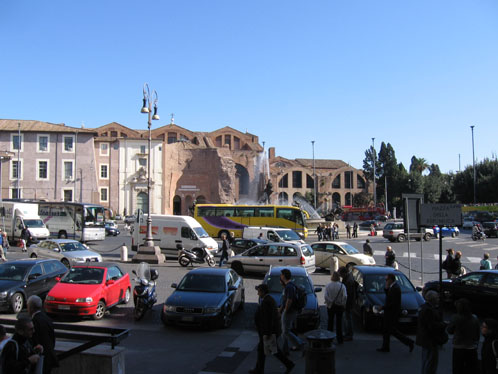 The Basilica di Santa Maria degli Angeli e dei Martiri is a section of the remaining structure of the Baths of Diocletian (Thermae Diocletiani, built about AD 300) on the Quirinal Hill of Rome, nowadays the Piazza della Repubblica. 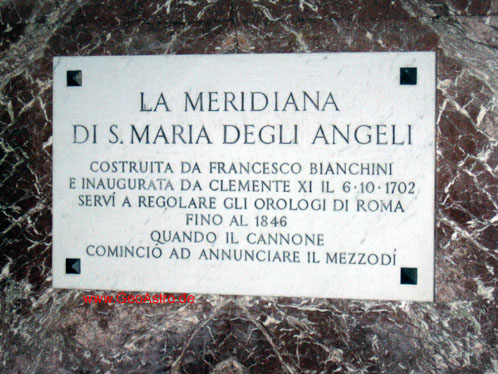 At the beginning of the eighteenth century, Pope Clement XI (1649-1721) commissioned Francesco Bianchini (1662-1729) to build a meridian line within the basilica to check the accuracy of the Gregorian reformation of the calendar (1582). The sun shines through a small hole in the southern wall to cast its light on the meridian line each day (aperture gnomon).  The aperture gnomon. The mean transit time (solar noon) is 11:10 UT, which varies according to the equation of time from around 10:54 UT to 11:24 UT. The distance d of the disk of light along the meridian line and the size (horizontal and vertical) are increasing from summer solstice to winter solstice, whereas the time t to cross the meridian line remains nearly constant. The value of pc (partes centesimae) is the distance of the disk of light in units of 1/100 of the aperture height above the pavement.  The diameter S of the
disk of light is mainly determined by the apparent
diameter α of the Sun:
S = D·tan α
The
duration t (in seconds) of the meridian transit
depends on the Sun's diameter α (arc
seconds) and the declination δ:
 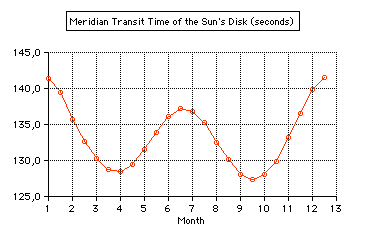 The diameter
a of the aperture and an amount due to diffraction (2·D·1.22·λ/a ≈4 mm) has to be added to S.
The diameter of the aperture is 6.6 mm The image is
of greatest sharpness if the distance D from the
aperture (diameter a) to the surface is given) by
(wavelength λ):
 D = 19.8 m (for a=6.6 mm, λ=550 nm) My
photos of the meridian transit on 2009, October
15:
computed time
of transit: 10:55:45 UT, partes
centesimae scale 121.6
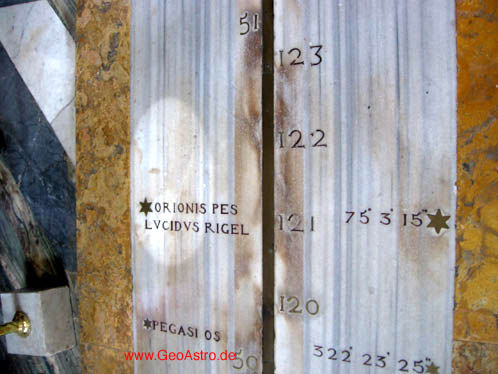 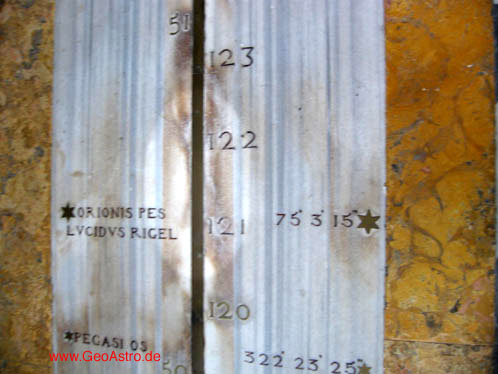 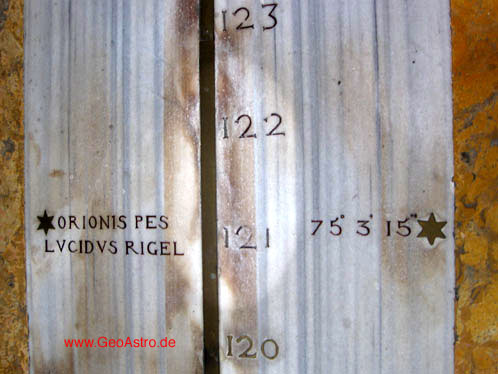 In Europe
the Julian calendar was in use since the 4th
century. The spring equinox was set to the date 21
March in the year 325 by the council of Nicea. By
the year 1582, the spring equinox was occurring on
March 11.
Pope Gregory XIII ordered that 10 days would be removed from the calendar so that the spring equinox would return to March 21. It was decided that the days October 5-14 of the year 1582 would be skipped during the transformation from the Julian to Gregorian calendar. 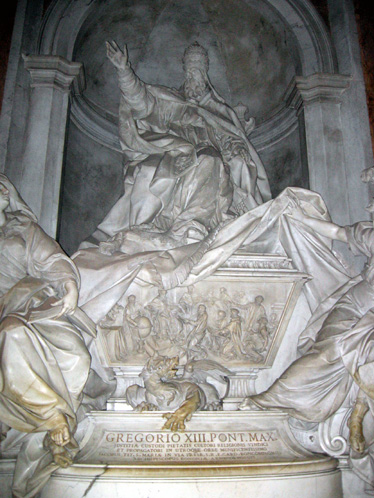 The tomb of Pope Gregory XIII in St. Peter's Basilica 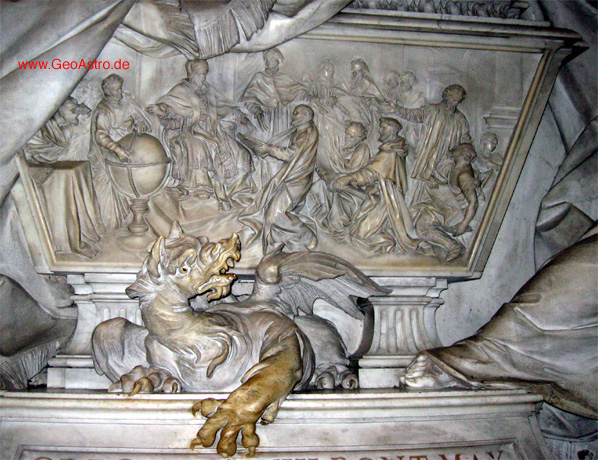 Detail of the tomb of Pope Gregory XIII in St. Peter's Basilica: discussion of a calender reform. 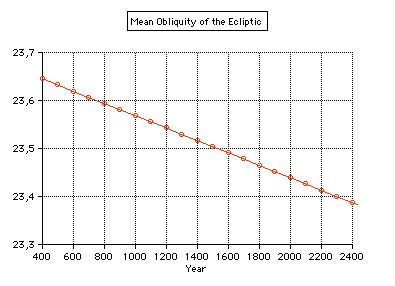 In the past centuries
the obliquity of the ecliptic decreased by 0.013° per
century. The result is a shift of the sun spot on the
meridian line:
|
|
|
|
Santa Maria degli
Angeli e dei Martiri (Wikipedia) S. Maria degli
Angeli e dei Martiri: La Meridiana |
| Books |
| Constantino
Sigismondi: Lo Gnomone Clementino, La Grande Meridiane
di Santa Maria degli Angeli, Roma 2009. Marco Catamo, Cesare Lucarini: Il Cielo in Basilica. La Meridiana delle Basilica di Santa Maria degli Angeli e dei Martiri in Roma, A.R.P.A. Edizioni AGAMI, Roma 2002. J. L. Heilbron: The Sun in the Cathedral, Cathedrals as Solar Observatories, Harvard University Press, 1999. Frans and Margret Bruin: The Limits of Accuracy of Aperture-Gnomons, in: Y. Maeyama and W. G. Saltzer (Editors): Prismata, Naturwissenschaftliche Studien, Steiner, Wiesbaden 1977, pp.21-42. |

Updated: 2023, Oct 06


